We are particularly fortunate in the UK with the availability of Aviation Museums. Apart from the Royal Air Force Museum at Cosford. There is the Imperial War Museum’s collection at Duxford and The Royal Air Force Museum at Hendon.
They of course are the major collections but there are many other private museums probably the best of which is at Newark in Nottinghamshire.
Another excellent aviation museum is the East Midlands Aeropark which is located adjacent to the East Midlands Airport. See my blog dated 17th. December 2013 for details.
I have visited all of them at various times but its 4 years or so since I visited Cosford so it was a long overdue return.
WL 732
A Boulton Paul Sea Balliol T21. One of 30 built in the early 1950‘s for the Royal Navy
They differed from the Royal Air Force (RAF) Balliol T2’s in having folding wings and an arrester hook for aircraft carrier deck landings.
Powered by a Rolls Royce Merlin Engine, the Navy’s Balliols served with No. 781 Squadron at Lee on Solent and with No. 1843 Squadron of the Royal Naval Volunteer Reserve at Abbotsinch.
In addition WL 732 also served with the Aeroplane & Armaments Experimental Establishment at Boscombe Down.
XD 674
A Hunting Percival Jet Provost (JP) T1 which was the ‘RAF’s first basic jet trainer.
Powered by the Bristol Siddeley Viper 201 engine, XD 674 was the prototype ‘JP’ and the first of ten T1s produced. It first flew in June 1956.
All T1’s were withdrawn from service by 1957 and this one became maintenance airframe 7570M.
The T1 was superseded in production by the T3.
It regained its service serial for display purposes.
XW 418
A British Aircraft Corporation (BAC) Jet Provost (JP) T5. It was the final training development of the Hunting Percival Jet Provost ‘ family’
Delivered to the ‘RAF’ in August 1972, many T5’s were upgraded to T5A standard
It eventually became Ground Instructional airframe 8173M at RAF Cosford before being transferred to the museum.
It regained its service serial for display purposes.
WP 912
A De Havilland DHC1 Chipmunk T10. A basic trainer, it was delivered to the RAF in December 1952.
It became Maintenance Airframe 8467M at Hendon.
At one time it joined the Royal Flight when it was used to train Prince Phillip the Duke of Edinburgh to fly.
It regained its service serial for display purposes.
XX 654
A Scottish Aviation Bulldog T1. A basic trainer, originally designed and flown by Beagle Aircraft, the company ceased trading and the rights to the aircraft were taken over by Scottish Aviation (Bulldog) Ltd.
The ‘RAF’ production run of 130 were built at Prestwick Airport. The civilian equivalent being known as the ‘Beagle Pup’.
XR 977
A Folland Gnat T1. Advanced 2 seat trainer. Developed from the single seat fighter which saw service with both the Finnish, Indian and Yugoslav Air Forces.
Folland Aircraft became part of Hawker Siddeley and went on to produce 14 pre production aircraft and 91 production aircraft between 1962 and 1965.
These being operated by the Central Flying School at Little Rissington and No.4 Flying Training School at Valley on Anglesey
Powered by the Bristol Orpheus engine the Gnat was flown by the RAF’s ‘Yellowjacks’ aerobatic team. Yellow did not show up well against grey cloud so the colour was changed to red.
So the ‘Red Arrows’ and a legend were born.
XL 568
A Hawker Hunter built by Hawkers as a T7 for the RAF but later converted to a T7A.
It spent some time with 74 Squadron and 237 Operational Conversion Unit before being retired to ground instructional work.
It came to Cosford 2002 and was painted into an early training livery. It is displayed suspended by cables from the roof in the
‘Cold War Exhibition’.
XX 496
The Jetstream was designed and built initially by Handley Page (HP) Aircraft. When ‘HP’ went bankrupt, the design was taken over by Scottish Aviation.
26 Jetstream 201’s were built for the ‘RAF’ as Jetstream T1’s of which 14 went to the Royal Navy as T2’s.
The RAF’s Jetstreams served for 30 years before withdrawal in 2003/4.
XS 709
A De Havilland project that became a Hawker Siddeley and later British Aerospace product the DH (HS) 125 was designed as twin engined business je
The ‘RAF’ acquired 20 as Navigation Trainers under the designation Dominie T1.
XS 709 first flew in December 1964 and was delivered in March 1965.
It continued in service when like the survivors of the batch it was withdrawn coming to Cosford in 2011.
WL 679
A Vickers Varsity T1. Developed from the Valletta and Viking family it differed in having a longer wingspan and fuselage than either together with a tricycle undercarriage.
Introduced to replace the Wellington in the crew training role, the prototype first flew in 1949.
Of 160 built, WL 679 was the last airworthy example serving in 1992 with the Royal Aircraft Establishment (RAE) at Boscombe Down in who’s livery it is preserved.

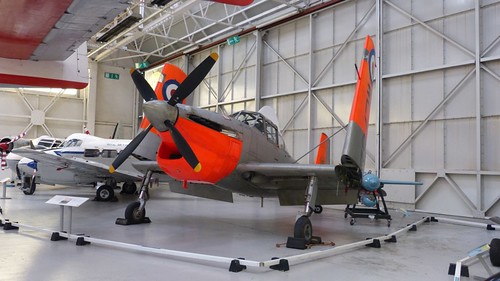
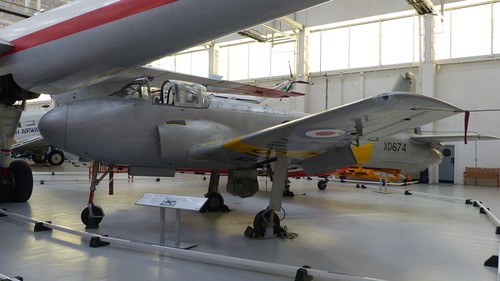

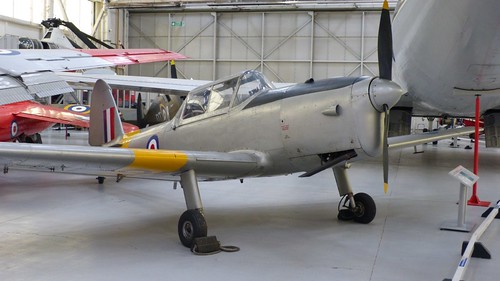
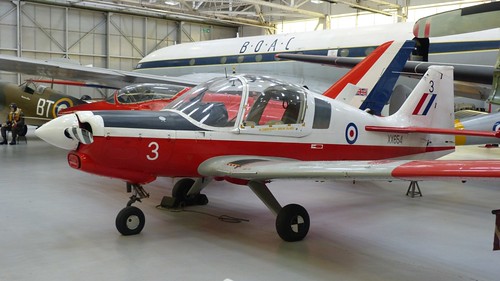

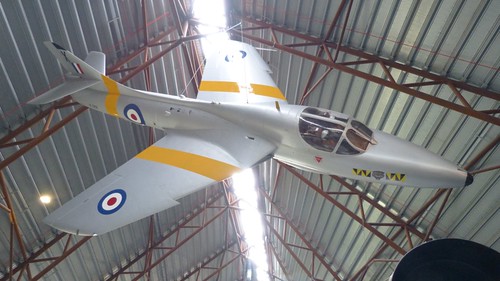
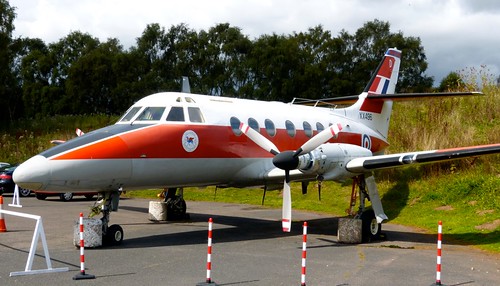

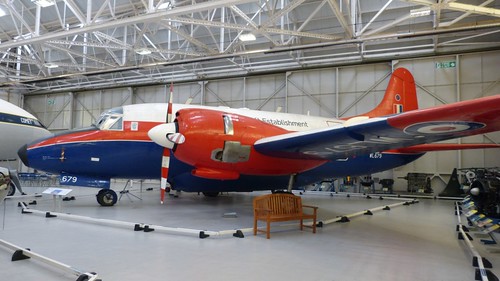
No comments:
Post a Comment